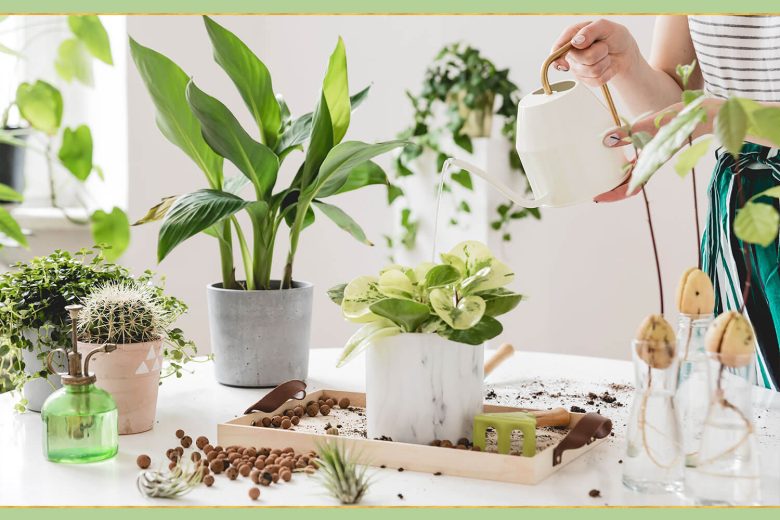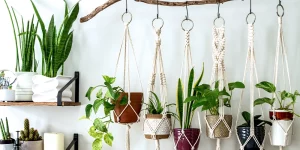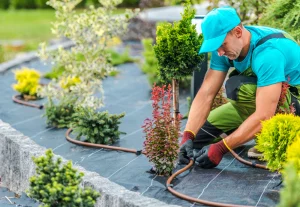A garden full of lush, vibrant plants is a dream for many. It not only improves the aesthetics of your outdoor space but also helps create a healthier environment. Whether you are an experienced gardener or a novice, there are some important plant care tips that can help your garden thrive. In this article, we will explore these tips to help you create a thriving garden that is both beautiful and useful.
1. Choose the Right Plants
Choosing the right plants for your garden is the first step to success. Consider factors such as the climate of your region, soil type, and available sunlight. Native plants are often a good choice because they are well-adapted to local conditions and easier to care for.
2. Prepare the Soil
Healthy soil is the basis of a flourishing garden. Test the pH and nutrient levels of the soil to determine its quality. You can improve soil fertility by amending it with organic matter such as compost. Properly prepared soil provides essential nutrients and promotes better water retention.
3. Water Well
Overwatering and underwatering are common mistakes that can damage your plants. Pay attention to the specific water needs of each plant type. In general, it is best to water deeply, but not often, so that the roots can penetrate deep into the soil and grow.
4. Coverage
Mulch is a gardener’s best friend. It helps retain soil moisture, suppress weeds, and regulate soil temperature. Apply a layer of organic mulch around your plants to keep them happy and healthy.
5. Cut and Remove the Heads
Regular pruning and decapitating (removing dead flowers) can promote new growth and improve the overall appearance of your garden. It also helps prevent the occurrence of diseases and pests.
6. Fertilization
Plants need essential nutrients to thrive. Consider using organic fertilizers to provide your plants with a balanced diet. Avoid over-fertilization as this can damage the plants and the environment.
7. Pest and Disease Management
Monitor your plants for signs of pests or diseases. Early detection and intervention are critical to prevent infection. Consider using natural and non-toxic pest control methods whenever possible.
8. Sunlight and Shade
Understanding your plant’s sunlight needs is critical. Some plants thrive in full sun, while others prefer partial shade. Position your plants accordingly to ensure they receive the right amount of sunlight.
9. Seasonal Care
Different seasons bring different challenges. Adjust your plant care routine to reflect changes in temperature, rainfall, and daylight hours. Under extreme conditions, winter protection and summer sun protection may be necessary.
10. Patience and Observation
Finally, be patient and observant. Gardening is a learning process and every garden is unique. Take the time to observe your plants, learn from your experiences, and adjust your care techniques accordingly.
11. Sustainable Gardening
Consider adopting sustainable gardening practices to minimize your impact on the environment. Use organic and eco-friendly products, practice composting, and reduce water waste through techniques such as drip irrigation.
12. Planting Guidance
Discover the benefits of companion plants. Some plants naturally complement each other, deterring pests or promoting each other’s growth. For example, growing marigolds next to tomatoes can deter aphids.
13. Garden Maintenance Schedule
Develop a regular garden maintenance schedule. This includes tasks such as weeding, checking for diseases, and replenishing mulch. A well-maintained garden is less susceptible to problems.
14. Keep Records
Keep a garden journal to keep track of your plant varieties, planting dates, and care routines. This data is invaluable for troubleshooting and planning future garden layouts.
15. Nature-friendly Gardens
Encourage biodiversity by creating a garden that welcomes pollinators such as bees and butterflies. By planting native wildflowers and installing bird feeders or birdhouses, your garden can become a haven for local wildlife.
Conclusion
In short, cultivating a thriving garden is an art that combines science, patience, and a love of the natural world. These important plant care tips provide a solid foundation for creating and maintaining a vibrant outdoor space. Remember to tailor your approach to your local climate and the unique needs of your plants. Gardening is an ongoing journey of learning and discovery, and each season brings new challenges and rewards. By maintaining your garden with care, applying sustainable practices, and paying attention to detail, you can create an oasis of beauty, biodiversity, and tranquility that not only enriches your life but also makes a positive contribution to the environment.
FAQs
1. How often should I water my plants?
The frequency of watering depends on the type of plant, the soil, and the climate. In general, it is best to water deeply, but less often to promote root growth. Always check soil moisture before watering and adjust accordingly.
2. What is the best time to water plants?
Watering in the early morning is usually ideal. This allows the plants to absorb moisture before the weather warms, reducing the risk of fungal diseases. Do not water in the evening as this can cause fluid retention overnight which can be harmful.
3. What should I do if my plant is infected with a pest?
If you notice pests on your plants, first identify the specific pests and research natural or chemical-free ways to control them. You can solve this problem by using insecticidal soap, and neem oil or by introducing beneficial insects such as ladybugs.
4. How do you improve the soil quality in your garden?
To improve soil quality, add organic matter such as compost or well-rotted manure. This enriches the soil with essential nutrients and improves its water-holding capacity.
5. How can you best protect your garden during the winter?
In cold climates, consider using mulch to insulate the soil and protect plants from freezing temperatures. You can also cover sensitive plants with frost cloth or move potted plants indoors.



